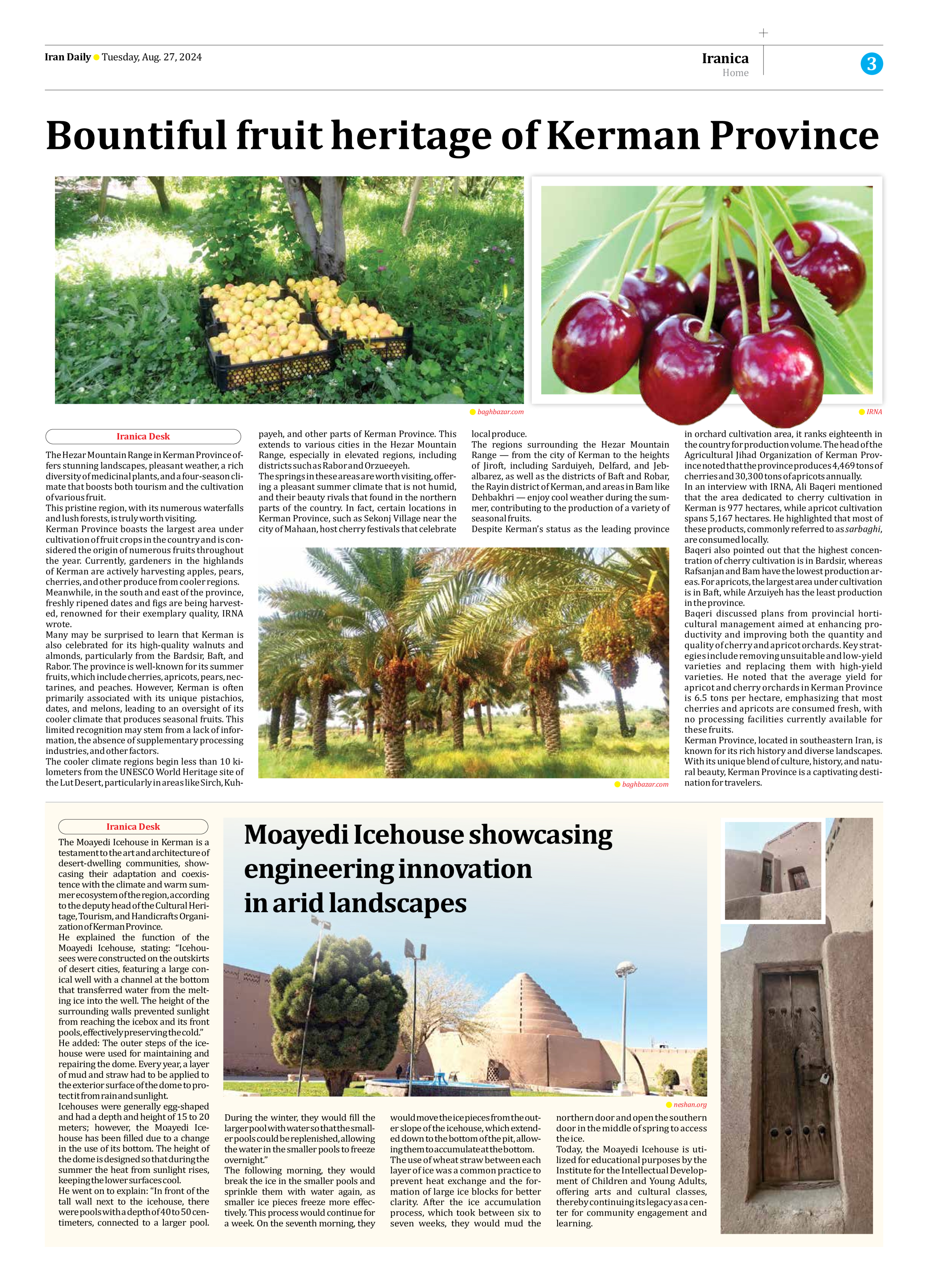
Moayedi Icehouse showcasing engineering innovation in arid landscapes
The Moayedi Icehouse in Kerman is a testament to the art and architecture of desert-dwelling communities, showcasing their adaptation and coexistence with the climate and warm summer ecosystem of the region, according to the deputy head of the Cultural Heritage, Tourism, and Handicrafts Organization of Kerman Province.
He explained the function of the Moayedi Icehouse, stating: “Icehousees were constructed on the outskirts of desert cities, featuring a large conical well with a channel at the bottom that transferred water from the melting ice into the well. The height of the surrounding walls prevented sunlight from reaching the icebox and its front pools, effectively preserving the cold.”
He added: The outer steps of the icehouse were used for maintaining and repairing the dome. Every year, a layer of mud and straw had to be applied to the exterior surface of the dome to protect it from rain and sunlight.
Icehouses were generally egg-shaped and had a depth and height of 15 to 20 meters; however, the Moayedi Icehouse has been filled due to a change in the use of its bottom. The height of the dome is designed so that during the summer the heat from sunlight rises, keeping the lower surfaces cool.
He went on to explain: “In front of the tall wall next to the icehouse, there were pools with a depth of 40 to 50 centimeters, connected to a larger pool. During the winter, they would fill the larger pool with water so that the smaller pools could be replenished, allowing the water in the smaller pools to freeze overnight.”
The following morning, they would break the ice in the smaller pools and sprinkle them with water again, as smaller ice pieces freeze more effectively. This process would continue for a week. On the seventh morning, they would move the ice pieces from the outer slope of the icehouse, which extended down to the bottom of the pit, allowing them to accumulate at the bottom.
The use of wheat straw between each layer of ice was a common practice to prevent heat exchange and the formation of large ice blocks for better clarity. After the ice accumulation process, which took between six to seven weeks, they would mud the northern door and open the southern door in the middle of spring to access the ice.
Today, the Moayedi Icehouse is utilized for educational purposes by the Institute for the Intellectual Development of Children and Young Adults, offering arts and cultural classes, thereby continuing its legacy as a center for community engagement and learning.







